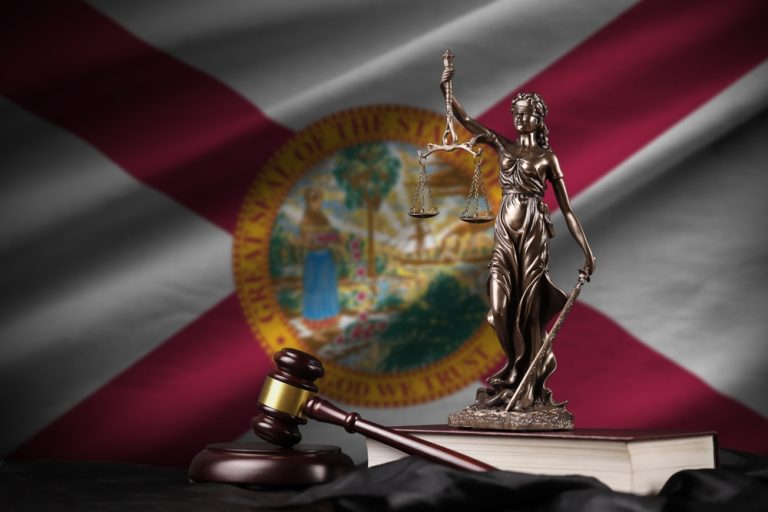Cover Me to the Moon: Will Insurers Provide Coverage for Space Tourism Travel?
Cover Me to the Moon: Will Insurers Provide Coverage for Space Tourism Travel?
Everybody Wants to Go to Space
While the floodgates for space tourism travel may not be open quite yet, the prospect is certainly on the horizon. Now that billionaires Jeff Bezos and Sir Richard Branson have taken trips past Earth’s atmosphere, it will not be long before others with the financial means to do so seek to follow in their footsteps.
Bezos’ Blue Origin LLC has not yet released ticket prices, but it reportedly has sold $100 million worth of tickets for future passengers. Branson’s Virgin Galactic Holdings is reportedly selling space trip tickets for $250,000 per person and has reserved 600 tickets. While these price points are certainly too expensive for the average person to afford, there is still an opportunity for insurers to offer some type of insurance coverage for this new-age travel. However, the question remains how, if at all, the insurance industry will offer insurance coverage for space tourism.
Current Status of Space Insurance
The only insurance currently required for commercial space operators is third-party liability coverage for property damage on earth or to a flying aircraft. According to the Organization for Economic Cooperation and Development, the market for space insurance, specifically space-related mishaps for mechanical parts, recently amounted to $800 million annually. Some sources have projected that space travel spending could reach between $10 billion and $15 billion annually by 2030, and $1 trillion annually by 2040.
Only one insurance company, Allianz, has reportedly offered a policy designed especially for space tourism. However, there is no available data on whether such a policy has in fact been sold yet. As things currently stand, there is no available insurance coverage specifically for space flight participants.
Regulation of Commercial Space Travel
In the U.S., the Federal Aviation Administration (FAA) manages commercial space transportation regulations. With the expansion of tourism into commercial space transportation, the FAA will face new challenges regulating human spaceflight passengers, such as determining whether and when to regulate the safety of crew and spaceflight participants, such as space tourists. Under the FAA, only minimal standards currently exist for commercial human spaceflight safety. The FAA requires launch companies to protect people and property on the ground, but spaceflight passengers are afforded no protections and are instead governed by an “informed consent” standard, much like skydivers and bungee jumpers. The FAA’s rules require passengers to be made aware that “the United States government has not certified the launch vehicle and any reentry vehicle as safe for carrying flight crew or spaceflight participants.”
Some believe stricter regulations for space tourism should be in place, such as those instated for the commercial aviation industry. However, others believe that overly burdensome rules and regulations will hinder the industry’s growth and progress. While the FAA may find itself conflicted between regulating and promoting the space industry, the FAA is congressionally prohibited from regulating crew and passenger safety until 2023. As such, the “learning period” of experimentation still has some life to live, but it will not be long before federal lawmakers and agencies begin to require regulations governing pilot training and spacecraft design and manufacturing, with the priority of maintaining passenger safety.
Potential Sources of Guidance for Space Travel Insurance Coverage
In considering where a potential space travel insurer could look for guidance on developing a space tourism policy, commercial aviation and cruising may be two potential candidates.
In the commercial aviation industry, insurance is typically divided between insurance for the aircraft itself, passenger liability, and third party liability for any damage caused by the operation of an aircraft. Airline insurance policies typically cover an entire fleet, and the range of insured indemnity limits for personal injuries can vary greatly. Some factors that may be considered in assessing aviation risks include the size of a fleet, the age of the aircraft, how much the aircraft is worth, how often the aircraft are serviced, what routes are flown, starting and landing sites, and what claims have been made in the past. In addition, there are several ways an aviation insurer can spread out the risk of loss.
Cruising is another area of high-volume tourism that may offer some potential guidance. Insurance coverage for cruise ships generally includes damage for business personal property within the boat that is not permanently attached, physical damage to the boat and machinery, ship coverage, and general liability coverage for bodily injury and property damage to others, including passengers. Again, this category of insurance extends coverage to personal injury to passengers.
These seem like potential good starting points for a space tourism policy, as the coverage extends past the current third-party property damage liability to also cover injuries to passengers. However, insurers providing aviation and cruise coverage have decades worth of data available to analyze and make a risk determination. On the other hand, there have only been two tourist space trips. Insurers may need to look at the considerable amount of data on rocket launches alone to help determine appropriate pricing for the polices, but this data does not offer any insight into the potential effects on passengers or the potential claims that may be brought. The lack of sufficient data points may be a crucial hurdle for any insurer to overcome in determining an appropriate rate of coverage.
In addition, many travelers elect to purchase travel insurance when flying, cruising, or traveling internationally. However, these types of policies typically only cover lost bags, reimbursements, refunds, and possibly also medical emergencies and disaster evacuations. Moreover, they usually do not cover extreme sports where the chance of death or injury is high, and it is seems almost certain that space travel will fall into this category.
Will Space Travel Insurance Ever Lift Off?
Fundamentally, insurance relies on transferring the risk of loss. Currently, only a small number of people at most may be headed to space in the near future. Thus, any form of insurance coverage would present greater risk to the insurer and be highly expensive to the insured.
One can only assume that Bezos and Branson had significant life insurance policies in place before their respective space travels, and it is possible that such life insurance policies may be the most accessible form of insurance to cover space travel for the near future. That is, of course, so long as life insurers do not specifically ask their insureds about potential space travel given its current rarity. However, if the space tourism industry picks up steam and reaches a more affordable price point, it may become an issue life insurance providers decided to use as a qualifying component.
Until the number of space travel passengers increase to such a level, it may be more likely that spaceflight participants will be required to sign contracts waiving liability for their safety during space travel. Virgin has indeed indicated that passengers may eventually be required to sign such a contract agreeing to be fully liable for their own safety. Such a consent would attempt to release operating companies from liability if ticket-holders are injured or killed; however, the question then arises whether such a waiver would actually insulate the space craft operator in the event of a loss. Moreover, in the event of loss of life, the families of the lost participant would not have signed the waiver, meaning their right to sue the operator would remain intact.
Furthermore, Jeff Bezo’s space trip lasted a mere ten minutes, and the passengers returned to their same departure location. One can wonder whether this will mean such space trips will be classified less like commercial airline travel and more like an isolated experience rather than commercial travel at all? What if these space trips evolve to include more time spent above Earth, perhaps even an overnight stay – would this then classify such trips as more similar to cruises?
The hunger for space travel as a fully functioning tourism platform certainly exists, and perhaps this interest will drive the insurance and regulatory communities towards developing regulations and systems of protection that account for this new form of travel. But it likely won’t be any time soon.
Sources:
- https://www.munichre.com/topics-online/en/mobility-and-transport/transportation-of-passengers/how-insurance-companies-deal-with-risk-of-plane-crashes.html
- https://www.trustedchoice.com/insurance-articles/opinion-variety/how-to-insure-a-cruise-ship/
- https://www.aviationtoday.com/2021/06/17/faa-still-faces-challenges-commercial-space-flight-regulations-despite-recent-rule-changes-gao-says/
- https://www.washingtonpost.com/technology/2021/06/23/space-tourism-faa-regulation/
- https://www.barrons.com/articles/space-tourism-insurance-blue-origin-virgin-galactic-51626553505?siteid=yhoof2
- https://finance.yahoo.com/news/amazon-founder-jeff-bezos-preparing-181313963.html
- https://www.indiatimes.com/technology/science-and-future/space-tourism-space-insurance-travel-544767.html
- https://www.nytimes.com/2021/07/09/business/dealbook/branson-bezos-space-race-insurance.html
- https://www.insurancebusinessmag.com/uk/news/columns/insurance-in-space–the-final-frontier-173645.aspx
- https://www.reuters.com/technology/bezos-2021-space-odyssey-risk-too-far-insurers-2021-06-24/
- https://www.forbes.com/advisor/travel-insurance/will-never-cover-this/
- https://www.global-aero.com/space-insurance-and-the-new-era-of-space-exploration/
- https://venturecaptive.com/captive-insurance-space-tourism/







